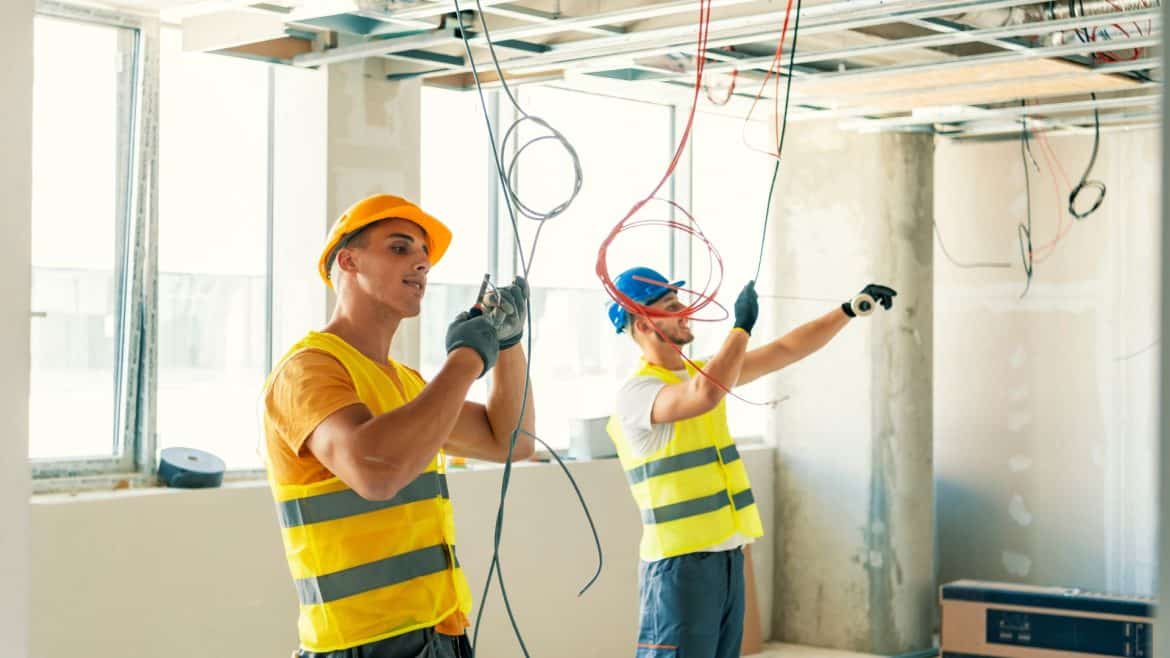The power distribution industry faces challenges in large spaces, where managing electrical needs often involves messy wiring and constant updates. As businesses grow and adapt, they need more efficient systems. Traditional methods can cause delays and frustration for workers and maintenance teams. To solve this, innovative approaches focus on flexibility and ease of use, moving away from old wiring methods.
These new strategies are changing how businesses handle power needs. Using open layouts that can change and modular systems that are easy to install and maintain, like a Track Busway system, companies get better daily operations and long-term energy management solutions.
Designing Layouts for Flexible Power Access
Effective power distribution starts with identifying key activity zones within large areas. Recognizing these zones helps businesses customize their power solutions to meet the needs of each area. Modular setups, like movable walls and adaptable workstations, make it easy to reconfigure spaces quickly. This flexibility improves workflow and supports a dynamic work environment.
Overhead track systems and strategically placed floor access points solve the problems of permanent installations. Hidden or low-profile power tracks keep spaces uncluttered and visually appealing, with concealed wiring options that further enhance aesthetic appeal. Regular reviews of power layouts can uncover opportunities for improvements, such as optimizing access points for frequently used equipment or integrating emerging power-saving technologies.
Plug-and-Play Power Systems for Quick Setup
Pre-assembled modular busway tracks are changing how power is distributed in large spaces. These systems are more convenient than traditional wiring. They allow quick installation, so new workstations or lighting fixtures can be set up without long waits. Plug-in junction boxes and connectors enable immediate connectivity, keeping productivity high and reducing downtime.
Temporary setups show how useful plug-and-play systems are. Events and exhibitions demonstrate their ability to handle changing power demands without complicated setups. When spaces need adjustments, it’s easy to add or remove components. For businesses managing large areas, these systems offer flexibility and improved efficiency.
Avoiding Power Distribution Bottlenecks
Centralized wiring systems often create bottlenecks that slow down power flow, especially in facilities with high power demands and multiple equipment zones. Switching to decentralized grids with busway tracks solves this issue by distributing power more efficiently. These systems distribute power evenly across large spaces, reducing the risk of overloads and frequent infrastructure updates, and they allow for localized adjustments in power distribution without affecting the entire network.
Scalable systems help manage power loads better and create distinct power zones. Each zone can be upgraded or maintained independently, without affecting the entire network. Tracking power usage and planning upgrades based on needs help organizations grow without disruptions.
Easy Maintenance and Future-Proofing with Modular Designs
Modular systems make maintenance simpler and future-proof operations. Teams can easily access and fix problems without dealing with tangled wires, making repairs more efficient even in high-traffic areas like manufacturing floors or server rooms. Unlike traditional wiring, modular tracks allow straightforward troubleshooting. Whether it’s a small repair or a major adjustment, these systems save time and reduce stress, minimizing the impact on daily operations.
Modular designs also make it easy to upgrade to newer energy technologies like solar panels and EV charging stations. Well-placed access panels allow maintenance tasks without disrupting daily operations. Regularly reviewing system configurations helps businesses stay functional and sustainable.
Cutting Long-Term Costs with Streamlined Installation
Investing in track systems requires less spending on labor and materials, with typical installations reducing labor requirements by up to 40%. The simple installation process speeds up setup, allowing businesses to start operating quickly and minimizing costly downtime. In fast-paced environments, this efficiency is essential, especially in industries like manufacturing and logistics where delays can affect output.
Over time, maintenance savings become significant due to the simple, customizable nature of track systems. Easy access means repairs and adjustments can be made with minimal disruption. When looking at lifecycle costs, track systems offer a clear financial advantage over traditional wiring methods, improving return on investment and supporting long-term planning.
Managing power in large spaces is challenging without an efficient setup. Traditional wiring often creates clutter, delays, and high maintenance costs. Modular systems and flexible layouts offer adaptable solutions. Overhead tracks, plug-and-play systems, and decentralized grids simplify reconfigurations and prevent power flow issues. Quick installations save time, and easy component access allows faster repairs and upgrades. Regularly reviewing power needs and making small adjustments keeps operations smooth. With lower long-term costs and minimal disruptions, businesses can focus on growth without outdated wiring problems. Modular designs boost productivity, reduce expenses, and maintain reliable power distribution.

